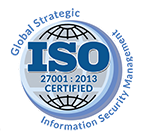Reviving Patient Care and Practice Growth in a Post-Pandemic World: How Seamless Hygiene Reactivation Boosts Production, Reduces Stress, and Keeps Teams Engaged
It’s no secret that the COVID-19 pandemic had a profound and lingering effect on dental care. In a peer-reviewed study, dental visits plummeted by 80.9% in April 2020 compared to the same month the previous year. Even after practices reopened, dental visits rebounded much more slowly and took a while to reach pre-pandemic levels.
And, people are still spending significantly less time outside their homes according to a study by researchers from UCLA and Clemson University. The data showed a decrease of almost an hour out of the house, with a 12-minute drop in daily travel times. This behavioral shift appears to be a lasting effect on the pandemic, the researchers said.
The American Dental Association (ADA) released a 2024 trend report that showed stress is the “new normal” in dentistry in the post-pandemic world. In the study, 82% of dentists reported some type of major stress relating to their profession.
ADA Communications Trend Report: 2024
ADA’s chief economist Dr. Marko Vujicic said the three biggest concerns that dentists had going into 2025, according to HPI’s polling data, were staffing shortages, dealing with insurance, and rising overhead costs. All of which were the same concerns to dentists at the start of 2024.
So, is there a way to address these concerns and cut the stress?
In a post-pandemic environment where patient behavior has shifted, staffing challenges persist, and costs continue to rise, dentists need solutions that both ease operational burdens and boost production.
One proven approach is a hygiene reactivation flow that integrates seamlessly with the practice’s existing tech stack. This system keeps the team aligned, tracks key metrics, and only pays out when results are achieved. The system is built around a “living list” that constantly updates from the practice management system (PMS) and automatically tracks staff calls and patient activity.
From there, patients are guided through a continuous nurture sequence with scheduled follow-ups, and when they attend, the visit is instantly detected and logged. The system rewards team members with daily micro-bonuses that deposit automatically, while a real-time leaderboard powered by PMS data drives motivation. The result is a smoother workflow, a more engaged team, and a schedule that stays full, helping dentists tackle stress head-on while recovering patients who might otherwise be lost.
In Q4 2024, the ADA surveyed dentists about their plans for 2025, and by Q2 2025, most dentists had followed through, particularly with investments in new software solutions.
The State of the U.S. Dental Economy Q2 2025 Report
In a recent study of 144 practices using TeamCare, the average incremental production revenue was $21,239. On average, 37 patients were successfully reactivated, and the average incentive payout per practice was $370.
The dental industry continues to face many challenges following the COVID-19 pandemic, including changes in patient behavior, higher stress levels, and operational difficulties. However, recent ADA reports show that many dentists are actively looking for and using solutions to overcome these problems.
By investing in advanced tools like hygiene reactivation systems that work smoothly with their current practice management software, dental practices can bring back inactive patients, increase production, and keep their teams motivated.
The results, including higher revenue and more patient reactivations, show that these methods work well. As more practices use these new and effective strategies, the dental field will be better prepared to reduce stress, improve operations, and meet the changing needs of patients in today’s healthcare environment.

